
en Making yeast dough or yoghurt
8
11 Making yeast dough or yoghurt
You can use your appliance to make yeast dough or
yoghurt.
11.1 Making yeast dough
1.
Make the yeast dough.
2.
Put the yeast dough into a suitable container.
3.
Place the container in the appliance.
4.
Cover the container with a damp tea towel.
5.
Heat the appliance in accordance with the corres-
ponding temperature indicator and time.
11.2 Making yoghurt
1.
To make thick yoghurt, add skimmed milk powder
to the milk before heating it.
Use one to two tablespoons of skimmed milk
powder per litre of milk.
2.
Heat pasteurised milk to 90°C on the hob to pre-
vent a disturbance of the yoghurt cultures.
For ultra-high temperature (UHT) milk, heating is not
required.
Cold milk extends the incubation time.
3.
Allow the milk in the water bath to cool to 40°C so
that the yoghurt cultures are not destroyed.
4.
Stir natural yogurt with designated yogurt cultures
into the milk.
Use one to two teaspoons of yoghurt per 100ml
milk.
5.
When using yoghurt starter, follow the instructions
on the packet.
6.
Use yoghurt jars with screw tops.
7.
If available, disinfect the washed yoghurt jars in your
steam oven at 100°C and 100% humidity for
20-25minutes.
8.
Pour the yoghurt mixture into the disinfected yoghurt
jars.
9.
Close the yoghurt jars using a screw lid.
10.
Place the yoghurt jars in the appliance.
11.
Place the finished yoghurt into the refrigerator.
11.3 Recommended settings for making yeast dough or yoghurt
Observe these recommended settings.
Food Temperature in °C Duration in minutes Information
Yeast dough 40 45-60 Bowl, dish or baking tray;
cover the yeast dough
Yoghurt 40 420 Close the yoghurt jars with
the lids
12 Low-temperature cooking
Low-temperature cooking is the ideal cooking method
for cooking all tender pieces of meat which are to be
cooked medium rare or "à point". The meat remains
very juicy and turns out as soft as butter. Since the
times for low-temperature cooking are considerably
longer, you have plenty of leeway for menu planning.
Meat that is cooked at a low temperature is easy to
keep warm.
12.1 Tips for low-temperature cooking
This is where you will find tips for achieving good res-
ults when cooking at a low temperature.
¡ Only use fresh, good-quality meat. Carefully remove
sinews and fat from around the edge. Fat develops
a strong, distinct taste during low-temperature cook-
ing.
¡ Even larger pieces of meat do not need to be
turned.
¡ You can cut the meat immediately after low-temper-
ature cooking. No standing time is required.
¡ Due to the special cooking method, the meat always
looks pink on the inside. This does not mean, how-
ever, that the meat is raw or not well done enough.
¡ The meat that is cooked at a low temperature is not
as hot as conventionally roasted meat. Ensure that
the sauces are very hot when you serve them. Place
the plate in the warming drawer in the last
20-30minutes.
¡ If you want to keep meat that is cooked at a low
temperature warm, select 60°C. Small pieces of
meat can be kept warm for up to 45minutes and
large pieces for up to 2hours.
12.2 Starting the "Low-temperature
cooking" function
1.
Only use suitable cookware made from glass, por-
celain or ceramic with a lid, e.g. a glass roasting
dish.
2.
If no lid is available for the cookware, use heat-res-
istant cling film to cover the cookware.
3.
Place the cookware on the bottom of the warming
drawer.
4.
Press to preheat the cookware.
5.
Close the warming drawer.
a The operation indicator flashes while the appliance
is preheating.
a The operation indicator lights up, the appliance
heats up and the fan runs.
6.
Rapidly heat a little fat in a pan.

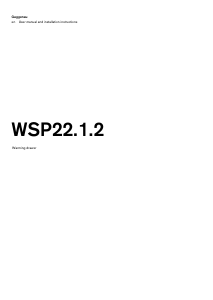


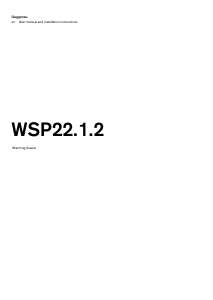

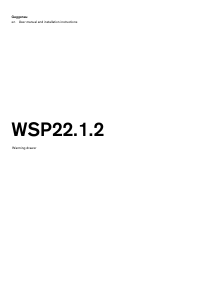
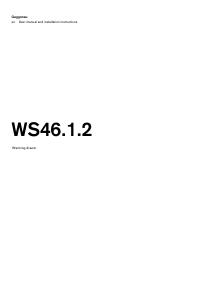
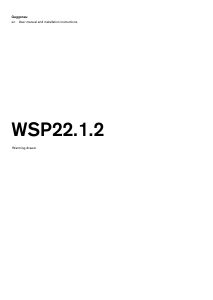
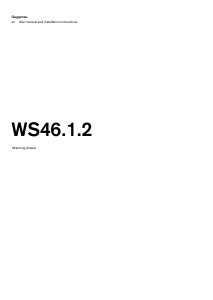


Join the conversation about this product
Here you can share what you think about the Gaggenau WSP221102 Warming Drawer. If you have a question, first carefully read the manual. Requesting a manual can be done by using our contact form.